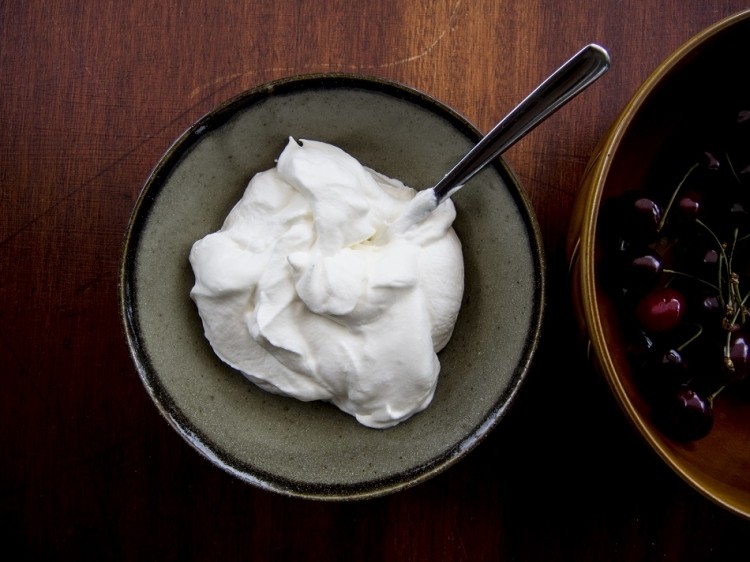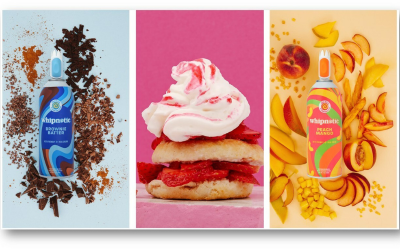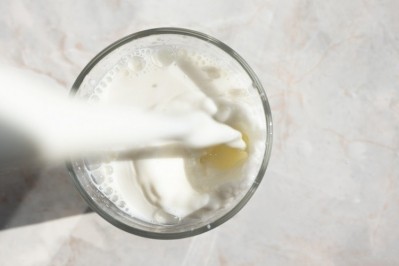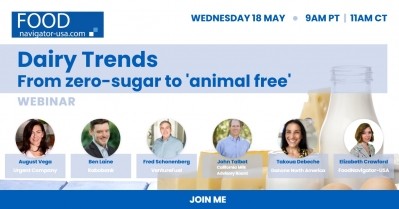Whipped cream made from lactic acid? Researchers develop fat-free alternative to whipped cream

High in saturated fat and calories, whipped cream is an indulgence for most consumers, who have turned to 'better-for-you' low-fat options or dairy-free alternatives made from coconut or palm oils as a replacement.
However, these replacements have never quite delivered on taste and texture or nutrition (as some coconut-based creams contain at least 25% fat), argued researchers at The University of Copenhagen.
"The most difficult aspect of developing an alternative food is getting the texture right. Whipped cream undergoes a unique transformation that occurs in a complex system where a high saturated fat content makes it possible to whip the cream stiff," said study author and associate professor Jens Risbo of the Department of Food Science at The University of Copenhagen.
"So, how do we create an alternative where we avoid the high-fat content, while still achieving the right consistency? This is where we need to think innovatively."
The solution? Lactic acid bacteria
Researchers turned to lactic acid.
"The idea of involving edible lactic acid bacteria as fat replacers can thus provide possible alternatives to using nature-derived components as active structural building blocks for colloidal food systems such as whipping cream," the study stated.
Commonly used in the food industry to culture yogurt or as a preservative in cold cuts, lactic acid was put to use in an entirely new way by researchers who used the bacteria strain as the building blocks of developing whipped cream.
"We only use four ingredients – water, bacteria (i.e. lactic acid), a bit of milk protein, and a single thickener. With these few ingredients, we’ve managed to make a fat-free product that can be whipped, peaks up and retains the liquid," said Risbo.
Dairy-based whipped cream is formed as the fat globules in cream clump up during the whipping process, until the airy foam stabilizes into a stable, non-runny whipped consistency, explained researchers.
The researchers used two different lactic acid bacteria for the two versions of the bacteria-based foam, both of which are roughly the same size as the fat globules in dairy-based whipped cream. The differing surface properties of each bacteria provide the foams with different structures.
One bacterial species forms a weak network that produces a softer foam. The second bacterial species, which is more similar to fat, forms stronger networks and thus a stiffer foam that can stand in taller, pretty peaks.
Researchers noted that the bacteria-based whipping creams exhibited better air incorporation and drainage stability than commercial dairy whipping cream
"Overall, the major achievement of this work was not the creation of foam that can be done by using any surface-active component, but the formation of wet, slow-draining and stiff foam with the standing ability to support its own weight, and such functionality traditionally achieved by saturated fats was successfully obtained by using lactic acid bacteria with aggregating ability," wrote researchers in the study.
"This will further open the possibility of using the natural lactic acid bacteria as both structural building blocks and probiotic food components."
Market ready?
While promising, Risbo points out that the bacteria-based foam is a proof-of-concept, which should not be seen as a stand-alone product. However, the researchers' findings provide insight into how to create a similar food structure using non-dairy sources.
"We’ve shown that bacteria can be used to create the right structure. Now that we understand the context and have learned which surface properties are important, it opens up the possibility of using many other things from nature. This could be yeast residue from brewing, or perhaps small building blocks that we extract from plants. This would make the product very sustainable," added Risbo
Source: Food Hydrocolloids
Lactic acid bacteria as structural building blocks in non-fat whipping cream analogues
https://doi.org/10.1016/j.foodhyd.2022.108137
Authors: Xiaoyi Jiang, et al.

















